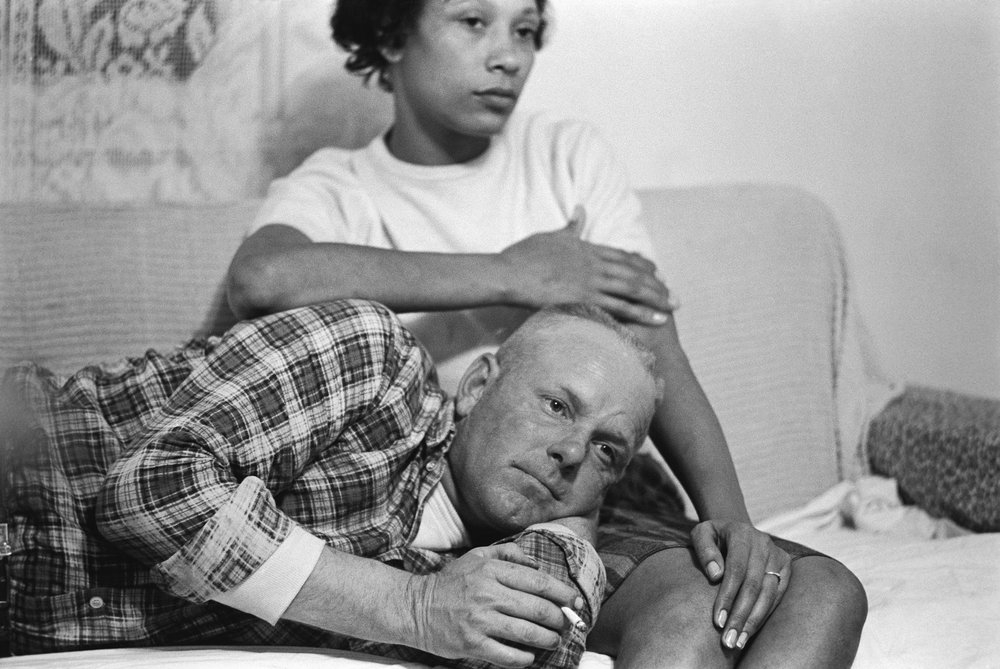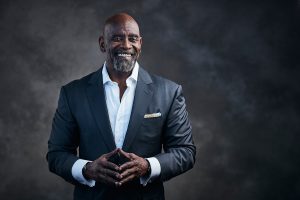“Not a day goes by that I don’t think of Richard and our love, our right to marry, and how much it meant to me to have that freedom to marry the person precious to me, even if others thought he was the ‘wrong kind of person’ for me to marry. I believe all Americans, no matter their race, no matter their sex, no matter their sexual orientation, should have that same freedom to marry. Government has no business imposing some people’s religious beliefs over others. Especially if it denies people’s civil rights. I am still not a political person, but I am proud that Richard’s and my name is on a court case that can help reinforce the love, the commitment, the fairness, and the family that so many people, black or white, young or old, gay or straight seek in life. I support the freedom to marry for all. That’s what Loving, and loving, are all about.” – Mildred Loving.1
On June 2, 1958, two childhood sweethearts, residents of Virginia, Mildred Jeter, an 18 year old, half African American and Cherokee woman, and Richard Loving, a 24 year old white man, were married in the District of Columbia, where it is legal for any man and women to marry regardless of their skin color. However, the District of Columbia was one of the few places where interracial marriages were legal. The District of Columbia along with other states believed a person could marry anyone they wanted regardless of the color of their skin. Shortly after their wedding, they returned to their home in Virginia. This was July 1958 16 and the State of Virginia did not recognize marriage between interracial couples which led to their arrest in the middle of the night in their home. “The Sheriff barged into the house, walked into their bedroom in the middle of the night, with no permission and demanded to know why they were together. Mr Loving worried of such a possibility told them his marriage license was in the drawer of the nightstand. But the sheriff arrested them anyway and charged them with violating that state’s anti-miscegenation laws prohibiting inter-racial marriages.” 2 They were arrested for violating the States Racial Integrity Act of 1924. The act made it illegal for a white person to marry anyone other than a white person, and were not able to marry unless they could prove the man and women were of pure white blood. If anyone violated this act it could result to 1 to 5 years in prison. In court, the Lovings both pleaded guilty and were sentenced to 1 year in prison. When they went to the Virginia Supreme Court Judge Leon M. Bazile found them guilty and suspended their one year sentence “On the condition that the couple leave the state and not return to Virginia together for 25 years.” 3

At that point there was nothing the Lovings could do anymore but leave. They left everything they had, including friends and family and tried to make a life for themselves in Washington DC. They would at times drives back to Virginia to see family and were extremely cautious to not be seen together. They were never together in Virginia unless they were inside the house where no one could see them. Some days Mildred would stay in Virginia and Richard would leave and on some they did the opposite. It was a tiring journey and Mildred could not take it anymore. Washington was not the ideal place where she wanted to raise her kids or live the rest of her life. She yearned for their life was back home in Virginia. During this time the Civil Rights Movement was rising and it inspired Mildred to take a huge step. In 1964, Mildred wrote to Attorney General Robert F. Kennedy hoping he could help. Kennedy then told her to contact the American Civil Liberties Union (ACLU). Bernard S. Cohen and Philip J. Hirschkop, ACLU lawyers, were more than eager to take up the case.4
Cohen and Hirschkop decided to take the case to the District Court of Virginia. It took a whole year for the suit to go through. However nothing changed. Judge Bazile’s argument was “Almighty God created the races white, black, yellow, Malay and red, and he placed them on separate continents. And but for the interference with his arrangement there would be no cause for such marriages. The fact that he separated the races shows that he did not intend for the races to mix.” 5 His prejudiced response gave them the grounds they needed to appeal to the Virginia Supreme Court of Appeals, however Judge Bazile’s decisions was upheld. It was the time every lawyer dreams of, for them to take the next big step: the Supreme Court. Finally, on April 10, 1967, the case came before the Supreme Court. This was the first time, the Supreme Court had to decide about interracial marriage bans. Neither one of the attorneys had experience in federal courts. Hirschknop was only two years out of law school and Bernard who had been out of law school for over three years, still lacked real experience in the Supreme Court. One of the biggest civil rights cases in the United States was being argued by two lawyers who lacked experience drastically lowering their chance of winning. Their argument was that Virginia’s law violates both the due process clause of the 14th amendment and the Equal Protection Clause. “The clear and central purpose of the Fourteenth Amendment is to eliminate all official state sources of invidious racial discrimination in the states.” 6 The lawyers used their evidence and knowledge to express how civil rights are part of any person’s constitutional and fundamental human right for pursuit of happiness, no matter the color their skin. The state made its argument based on “equal application theory”. They argued since both received the same punishment, they were not discriminated based upon their race, i.e. there was nothing constitutionally wrong with the court’s decision.

Neither Mildred nor Richard Loving appeared in court. However Richard sent a letter to the justices “Tell the Court I love my wife and it is just not fair that I cannot live with her in Virginia.”7 The love of the Loving was strong and the United States Supreme Court Justices granted it constitutional protection it deserve equally under the law. On June 6 1967, the Court made its decision. Their unanimous decision ruled in favor of the Loving family. Bernard S. Cohen and Philip J. Hirschkop, won the case for the Lovings and proved the State of Virginia wrong. Loving v. Virginia 1967 forced 16 US states to strike down their anti-miscegenation laws.8. Chief Justice Warren delivered the opinion of the court. He stated “There is patently no legitimate overriding purpose independent of invidious racial discrimination which justifies this classification. The fact that Virginia prohibits only interracial marriages involving white persons demonstrates that the racial classifications must stand on their own justification, as measures designed to maintain White Supremacy.” 9

Nine years after the Lovings’ arrest, Mildred and Richard could finally go home in peace. Richard built a house for his wife and 3 children in Virginia where they live together having overturned unjust laws. The battle was finally over, couples of every race could intermarry in any state they chose. The Lovings got to live and raise their children in their home state. Sadly, this beautiful family’s happiness was cut short when a drunk driver ended the life of Richard Loving on June 29, 1975. Mildred lost sight in her right eye in the same accident. She continued to lived in the house Richard built for her and their children. She never remarried. She could never love anyone as much as she loved Richard. She did not leave her house as much after his death and remained pretty quiet until recent years. She became an even bigger inspiration to many. She was interviewed and asked about her opinion on same sex marriage. She became a huge advocate for same-sex marriage. From her own experience, she knew that the government has no right to tell anyone who they can and cannot marry. Her story helped the landmark 2015 same sex marriage case that made it legal for adult to marry no matter their gender. Last year was the 50th anniversary of the Loving case, and on June 12, we celebrate the unofficial day called “Loving Day” to remember the Loving case and the end of all bans on interracial marriages. Their love is eternal and their case will be remembered as the case that showed hope and love can overcome injustice and discrimination. “Thats what Loving and loving are all about.” 10
- Stolberg, Sheryl G. “50 Years After Loving v. Virginia.” The New York Times. June 11, 2017. Accessed April 28, 2018. https://www.nytimes.com/2017/06/11/us/50-years-after-loving-v-virginia.html. ↵
- Halman, RW. “Miscegenation: Loving v. Virginia.” Spirit of a Liberal (blog). Accessed April 28, 2018. http://www.theliberalspirit.com/miscegenation-loving-v-virginia/. ↵
- Roberts, Dorothy E. “Loving v. Virginia as a Civil Rights Decision.” Review of Loving v. Virginia Supreme Court Case. 2014, 175-209. Accessed April 28, 2018, http://www.nylslawreview.com/wp-content/uploads/sites/16/2015/02/Volume-59-1.Roberts.pdf. ↵
- Holland, Brynn. “Mildred and Richard: The Love Story That Changed America.” History Stories. February 17, 2017. Accessed April 28, 2018. Mildred and Richard: The Love Story that Changed America. ↵
- Holland, Brynn. “Mildred and Richard: The Love Story That Changed America.” History Stories. February 17, 2017. Accessed April 28, 2018. Mildred and Richard: The Love Story that Changed America. ↵
- Loving v. Virginia, 395 (June 12, 1967). ↵
- Holland, Brynn. “Mildred and Richard: The Love Story That Changed America.” History Stories. February 17, 2017. Accessed April 28, 2018. Mildred and Richard: The Love Story that Changed America. ↵
- Deniz, Gevrek. “Interracial Marriage, Migration and Loving.” The Review Of Black Political Economyno. 1 (2014): 25. RePEc, EBSCOhost (accessed March 27, 2018) ↵
- Loving v. Virginia, 395 (June 12, 1967). ↵
- Stolberg, Sheryl G. “50 Years After Loving v. Virginia.” The New York Times. June 11, 2017. Accessed April 28, 2018. https://www.nytimes.com/2017/06/11/us/50-years-after-loving-v-virginia.html. ↵



115 comments
Luisa Ortiz
#LoveWins! I cannot believe that America the land of the free had this absurd law. Good job on this article it had all the feelings, I was upset, excited, happy, and sad all in one article! When I read the part that Mr. Loving died I got super sad, and when the article continues saying that Mrs. Loving never remarried and she was an advocated give me the chills! Good job on this article!!!!!!!
Adrian Cook
I have heard of the Loving family and this case in my criminal justice class but never get the full story of what happened. I couldn’t believe police officers were allowed to just barge in on someone in the middle of the night then be sentenced to one year in prison?! It’s crazy to see how the world is changing before our eyes and anybody can be married no matter what race, religion, or sex. I’m happy these two fought for their love together and changed the world.
Sienna Guerra
It is so sad how racism was the reason this couple had to hide their love story. The right of loving who you want, no matter what race, ethnicity, color, religion, anything like that is a right should be for everyone. This reminds me of same sex marriages where people barely gained the right to marry a person of the same sex but only 1/5 of the world is allowed this right.
Montserrat Moreno Ramirez
What a lovely couple, I can only imagine what it feels like to be the change and the voice of many people going through the same exact thing as you, and being able to achieve that common goal. It’s funny that the couple’s last name was “loving” since that’s what this story is about, how you should be able to love whoever you want no matter, race, color or sex. It’s your life and you have the power to decide over it
Nathan Alba
I thought the article was written quite well, it is sad to think that only 60 years ago was interracial marriage literally against the law in some places. But I think also there is some good; in the sense that we have progressed so much since then. I liked how the article detailed how the Lovings’ would go on to overcome the racial bigotry and in the end, were allowed to go home in peace for once. Although the case is unfortunate, it was a serious eye opener to the country and have come quite far since.
Alexandra Lujan
So sad that they had to hide there love for each other because they could end up in jail. What’s even more shocking is that this wasn’t too long ago, this is how things used to be it was seen as a terrible thing dating outside your race, and I’m glad that has changed, and people are allowed to love who they want.
Daniela Cardona
I love the quote “That’s what Loving and loving are all about,” and I loved the article as a whole. I can’t believe I had never heard of the Loving’s until now. It’s so amazing that they didn’t let anything stop the way the felt about each other. They let their love be the driving force in their life and not only made a better life for them but for everyone in this country. It’s sad that their love was cut short, but amazing that Mrs. Loving is still advocating for equal marriage.
Alyssa Garza
It’s sad to see that they couldn’t love openly instead they had to hide it because by law you could go to jail for loving someone that’s not your race. I love how they continued to fight for the right to love and live together in the same state they call home. This case helps every person that wants to marry a different race or same sex marriage which is good because I also believe that the government has no right to tell us who we can love or who we have the right to marry.
Belene Cuellar
Its hard to think that a while ago people were not allowed to marry outside their race. These people were forced out of their home and move somewhere else to avoid prison. Their courage made them stand up for their love and fight for their rights. It is thanks to them that we have the freedom to love whoever we want and marry them.
Valeria Perez
It amazes me how this sounds ridiculous now, the banning of interracial couples, but it was actually not long ago that this was illegal. This brings into question the government’s authority and because of that not only the Loving’s but all interracial couples suffered.
It is also interesting how two relatively unexperienced lawyers won the case in the Supreme Court. Amazing story!